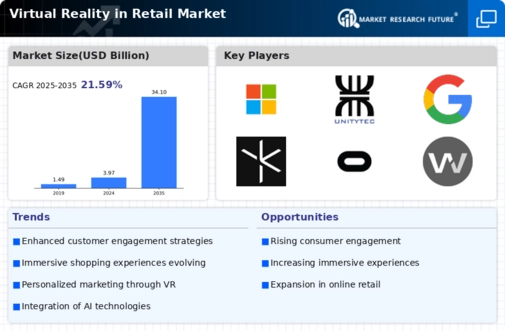Market Share
Virtual Reality Retail Market Share Analysis
The retail industry is rapidly changing due to Virtual Reality (VR), which is bringing vivid and tailored purchasing experiences. VR retail trends are growing as innovation accelerates. Buyer demand for memorable shopping experiences is driving this deluge. VR allows shops to provide clients a three-layered virtual retail façade to bridge online and offline buying.
VR-integrated item perception is a trend. Retailers are using VR to show customers products before they buy. Since customers can make better educated decisions based on fair depictions of their interests, this improves the shopping experience and lowers revenues. Furniture businesses use VR to let clients virtually place furniture in their homes to see how it suits their style.
Virtual tryouts are another important trend. VR is being used in the fashion sector to let shoppers try on clothes, accessories, and makeup. For years, internet shoppers have debated whether to buy items without trying them on. Virtual trials boost client confidence and make purchasing more fun.
VR is also improving virtual shopping partners. Virtual assistants are helping shoppers with tailored advice and assistance from retailers. Virtual shopping pals use artificial intelligence to understand client preferences and offer customised ideas, making shopping more efficient and personalised.
VR is utilized to create virtual consumer facades and pop-up businesses. Customers can shop in virtual storefronts created by retailers. This is vital for addressing global crowds since clients from other countries may access and explore the virtual store without a physical presence.
Additionally, VR in retail is increasing consumer loyalty through gamification. VR retailers are adding gamified elements to make shopping fun and engaging. This enchants clients and encourages them to explore online products and innovations.
The retail sector is integrating AR and VR more as market trends change. Combining AR and VR allows for more immersive and engaging experiences. AR lets clients view more information about an item while engaging with it in a VR world."











Leave a Comment